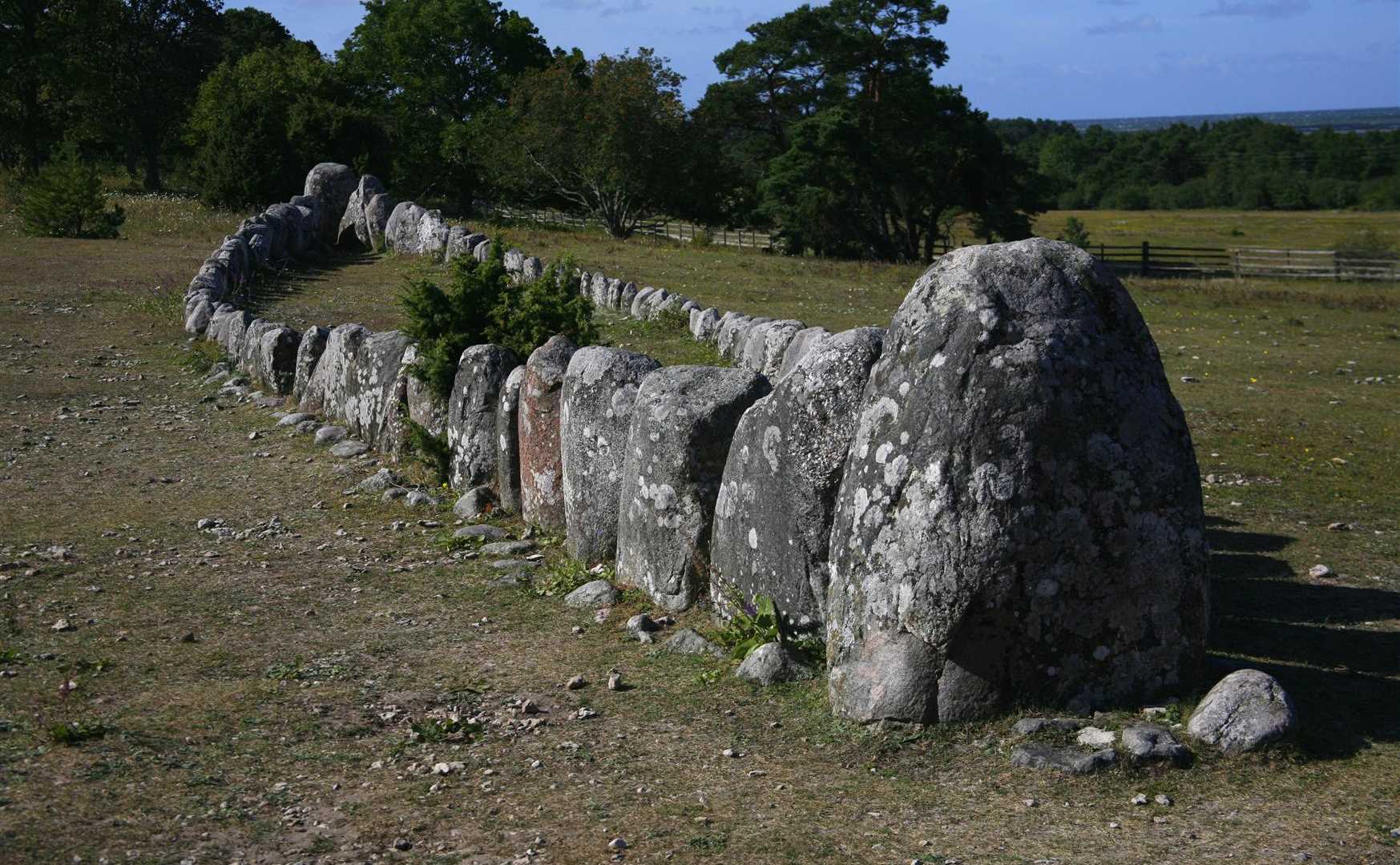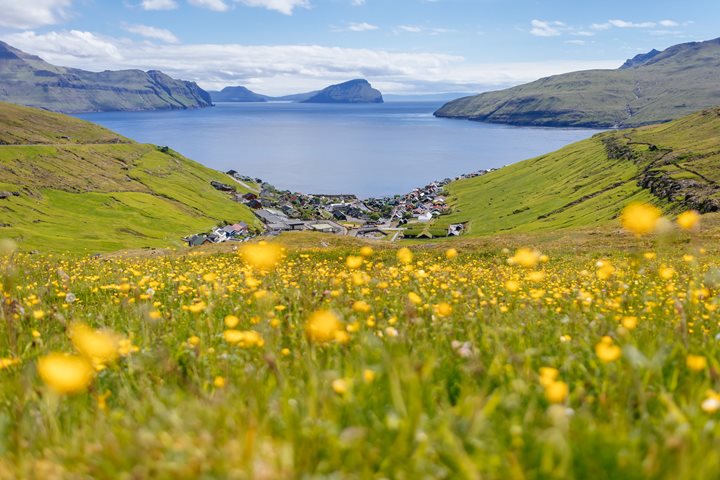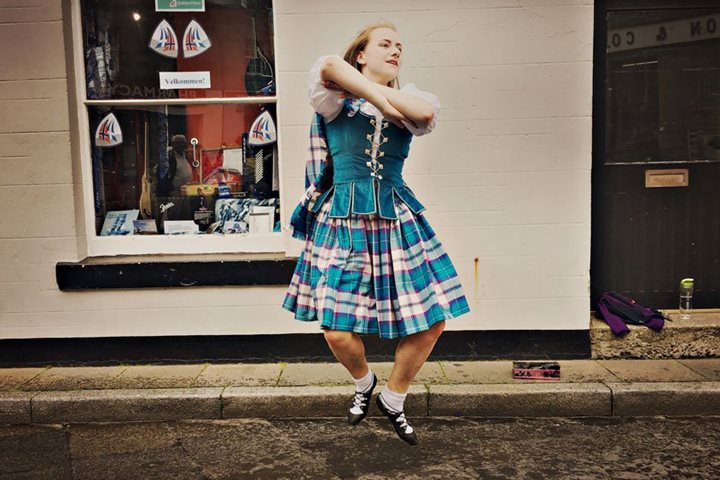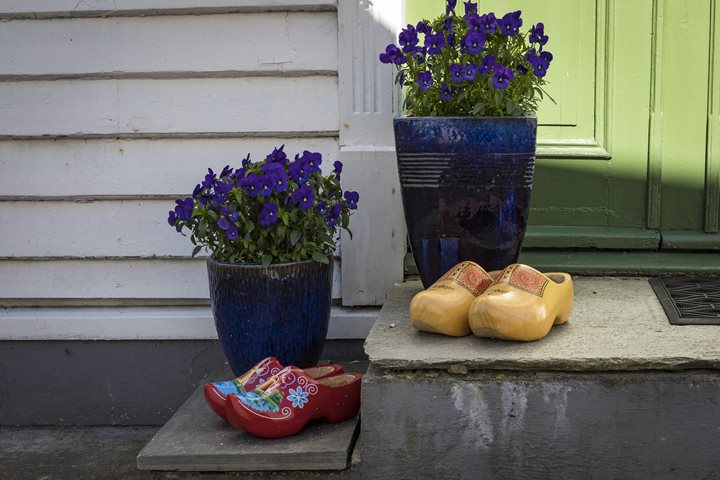This morning we came alongside in the small harbour of Visby on the island of Gotland. The town was designated as a UNESCO World Heritage Site because of the wealth of its medieval period architecture, which includes over two miles of intact wall, towers, gateways, erstwhile merchant houses, a cathedral and numerous churches. Our focus this morning was an exploration by motor coach of the coast lying to the south. Our first stop was at a remarkable prehistoric site near Frojel. This consists of a Bronze Age boat-shaped grave dated to around 1,000 BC. Archaeological excavation here revealed cremated human remains and associated grave goods. This tradition continued right up into the Viking Period many centuries later when high status individuals were interred in longships within burial mounds. We then drove to a small medieval church which was founded in the thirteenth century. The ceiling above the main alter and portions of the walls were decorated with fine paintings and the church is still used for Divine worship. A short stop was made at a small traditional fishing station. In bygone days local farmers would stay here for a number of weeks each year to fish for herring and cod, an important supplement to their diet. Each family had its own small wooden hut where they could also store their fishing equipment. Members of those same families now use them for holiday accommodation. On our way back to the ship for lunch we were dropped off just outside one of the main original gates of Visby and walked down through the medieval core of this picturesque town. Preparations for the annual re-enactment of the infamous Battle of Visby were underway. Hundreds of participants were dressed up in contemporary costumes and bands of opposing warriors practiced their manoeuvres.
Many chose the option of exploring the town independently for the afternoon. A popular visit was to the excellent Fornsal Museum which houses one of the best collections of prehistoric and medieval artefacts in Scandinavia. A dedicated exhibition details the Battle of Visby which took place on July 31, 1361. An invading Danish army with their king, Waldermar Atterdag, slaughtered some 1800 peasant Gotlanders outside the walls of their town. Severed limbs and skulls are grim testament to the brutality of the massacre. Others decided to sample the eclectic range of beers offered by a micro-brewery in the town, the owners of which proudly continue a tradition of brewing extending back to Visby’s Viking occupants in the tenth century.
This evening we dined onshore at the wonderful Krusmyntagarden, a restaurant located on the coast a little distance outside of the town. Barbequed meats, salads and home baked breads were savoured as we sipped a selection of fine wines. A trio of talented musicians called Vasen, enthralled us with their consummate skills on nyckelharpen, five string viola and twelve string guitar. Layered clouds tinted crimson streaked a pale azure sky as we headed home to our wonderful ship.







